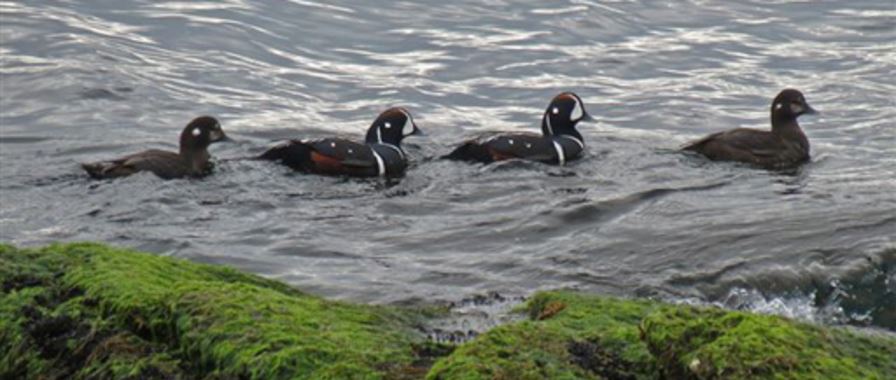The restoration of the Sachuest Point National Wildlife Refuge (Rhode Island) salt marshes, which are located adjacent to the Third Beach parking lot, has entered a new phase with the plantings of various types of grasses.
Earlier in the year contractors raised parts of the wetlands to a high marsh status, using 11,300 cubic yards of sand. This work was performed as part of resiliency project that will allow the marsh to better withstand strong storms and tides in the future. The project is being coordinated by the U.S. Fish and Wildlife Service and includes a number of partners including Save The Bay, Norman Bird Sanctuary, and other conservation groups.
On a recent cool and windy morning, 13 volunteers from CVS Pharmacy, 12 Save The Bay staff members and interns, and 27 biology students from Newport’s Rogers High School planted over 6,000 marsh grass plants in the wetlands.
Wenley Ferguson, Save The Bay’s restoration specialist, explained, “The CVS volunteers planted approximately 4,000 Destichlis spicata plants, also known as spike grass. It’s a high grass and extremely important to nesting sharp-tailed salt marsh sparrows. We hope to create a vibrant habitat here for this species.”
The spike grasses, which were supplied by USFWS, were planted in 30-foot circles to allow the plants to colonize a specific area. “Spike grass is a very good colonizer and sends out long roots to stabilize marsh sand,” Ferguson said.
The Sachuest Point National Wildlife Refuge is one of five national wildlife refuges in Rhode Island. About 200 million years ago, when the supercontinent Pangaea split, Africa left traces of itself along the shores of Sachuest Point creating the Price Neck Formation.
From the mid-1600’s to the early 1900’s, Sachuest Point was used for farming and sheep grazing. During World War II, the U.S. Navy used this site for a rifle range and communications center.
In 1970, a 70 acre donation from the Audubon Society of Rhode Island led to the establishment of Sachuest Point National Wildlife Refuge.
Today, with the land transfers from the Navy, the Refuge totals 242 acres that provide an important stopover and wintering area for migratory birds.
See Sachuest Point National Wildlife Refuge website & photo credit.

